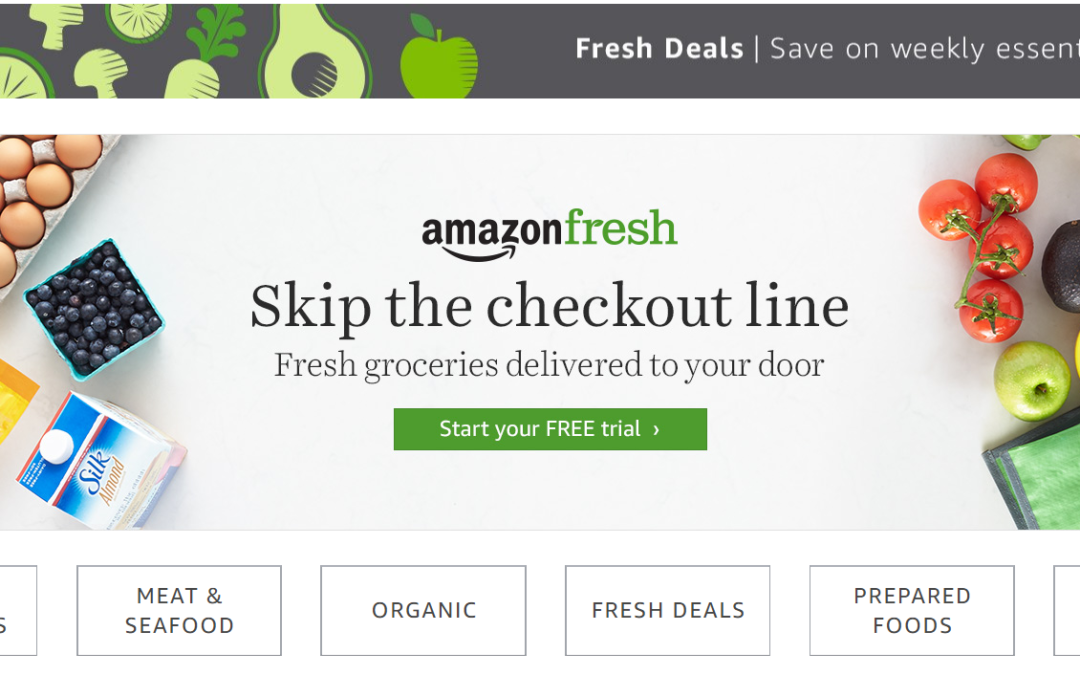Amazon today (Feb 1) announced its financial results for Q4, 2017 and full year 2017. Net sales increased 38% to $60.5 billion in the fourth quarter, compared with $43.7 billion in fourth quarter 2016. For the full year of 2017, net sales increased 31% to $177.9 billion, compared with $136.0 billion in 2016.
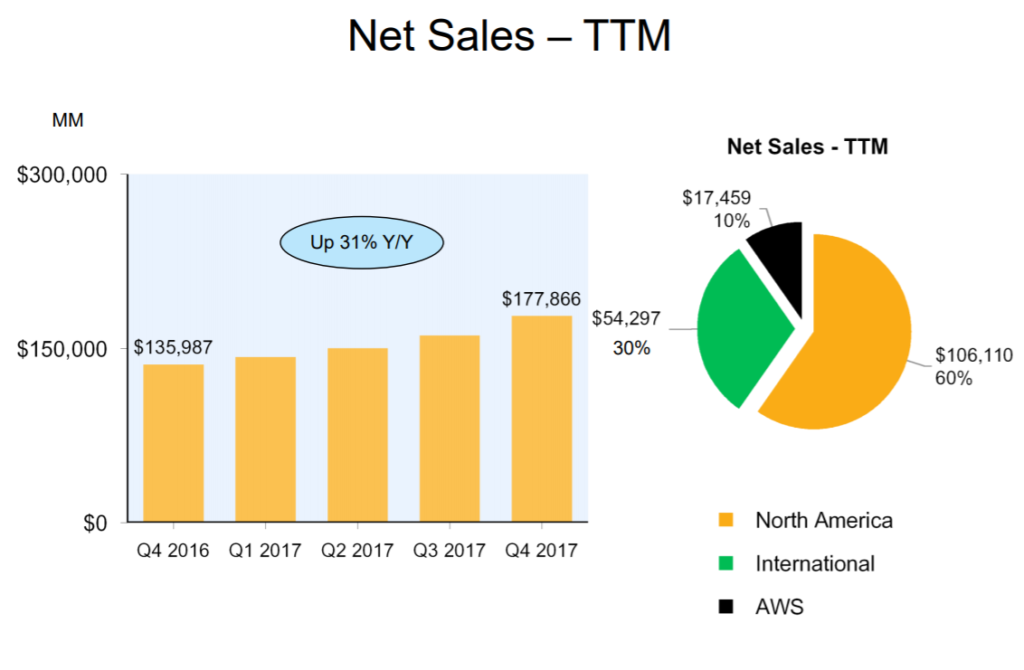
The company attributed higher margins to a high sales volume as well as better operational efficiency, especially in North America. The company added over 30% to its fulfillment square footage in 2017. The company will continue to build the logistics capability, all the way to the home, and finding out “where the shipment is going”.
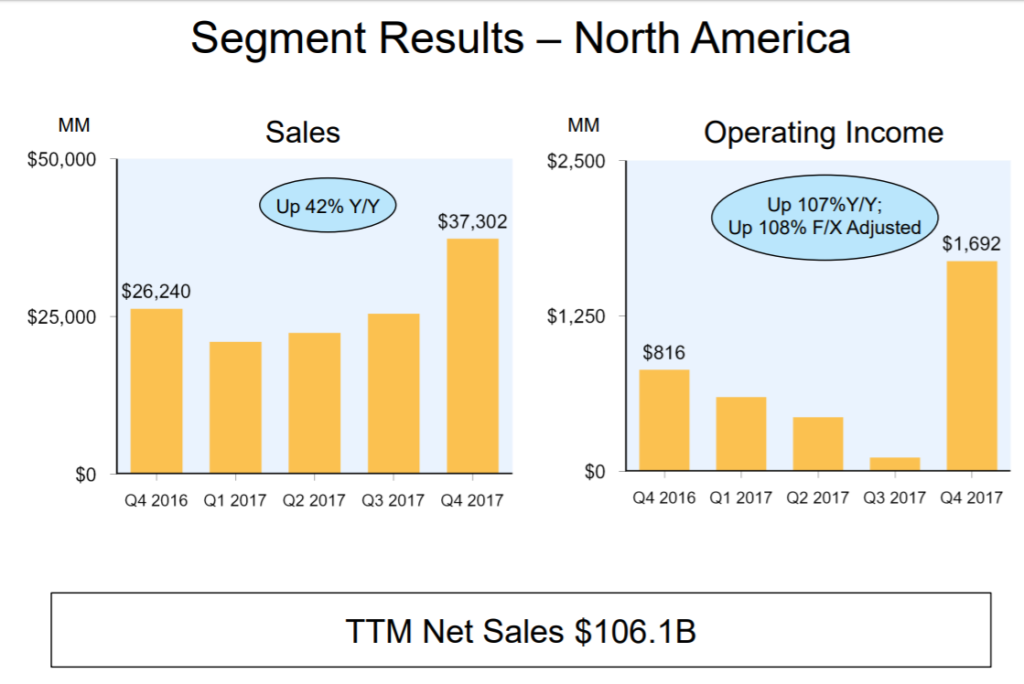
Growth drivers discussed in the Q4 2017 Webcast and press release include:
Amazon Echo, Alexa and Devices
- Alexa results were a “positive surprise” for the company; record device sales and high levels of customer engagement and voice shopping, over 30,000 skills for Alexa, 4,000+ smart home devices from 1,200 unique brands.
According to eff Bezos, Amazon founder and CEO: “Our 2017 projections for Alexa were very optimistic, and we far exceeded them. We don’t see positive surprises of this magnitude very often — expect us to double down“.
- Fire TV Stick and Echo Dot were the best-selling products in 2017 across all of Amazon. Customers purchased tens of millions of Echo devices last year. According to the company’s webcast, these are highly correlated: activating Fire TV and listening to music through Alexa are on the rise.
- Alexa Voice Service (AVS) adoption among device makers continues to grow. Brands announced new AVS products at the 2018 Consumer Electronics Show, including: new integrations for Alexa on PCs from HP, Acer, ASUS, and Lenovo; a new automotive integration with Toyota; and new devices from Polk Audio, Anker, Jabra, and more. Amazon also introduced new tools and developer kits, including the Alexa Mobile Accessory Kit and Alexa Premium Far-Field Voice Development Kit, to make it easier for developers to bring Alexa to more devices.
Amazon Prime
- In 2017, more than five billion items shipped with Prime worldwide. More new paid members joined Prime in 2017 than any previous year — both worldwide and in the U.S. The company mentioned that shipping costs will be tied to AFN (Amazon Fulfillment Network) unit growth, faster Prime adoption, and better shipping methods.
- The company sees continued Y-o-Y growth in Prime subscribers’ spending. Increased spending by Prime members continues, and the company is making sure that it is adding value, through FBA (Fulfillment by Amazon) among others.
- Prime Day on Q3 added many international customers. In India, more Prime members joined Prime in its first year than in any other country before. This is a very important market for Amazon. In Q4 2017, Amazon launched Prime in the Netherlands and Luxembourg, and added the ability for customers in Belgium to join Prime and shop in Dutch. Amazon launched Prime in Singapore.
- Content (Prime Video), Prime Now, Amazon Fresh are among the drivers for Prime loyalty benefits, but the company will continue to make sure that this program is beneficial for customers worldwide. On content, the company uses data to understand what consumers want to see.
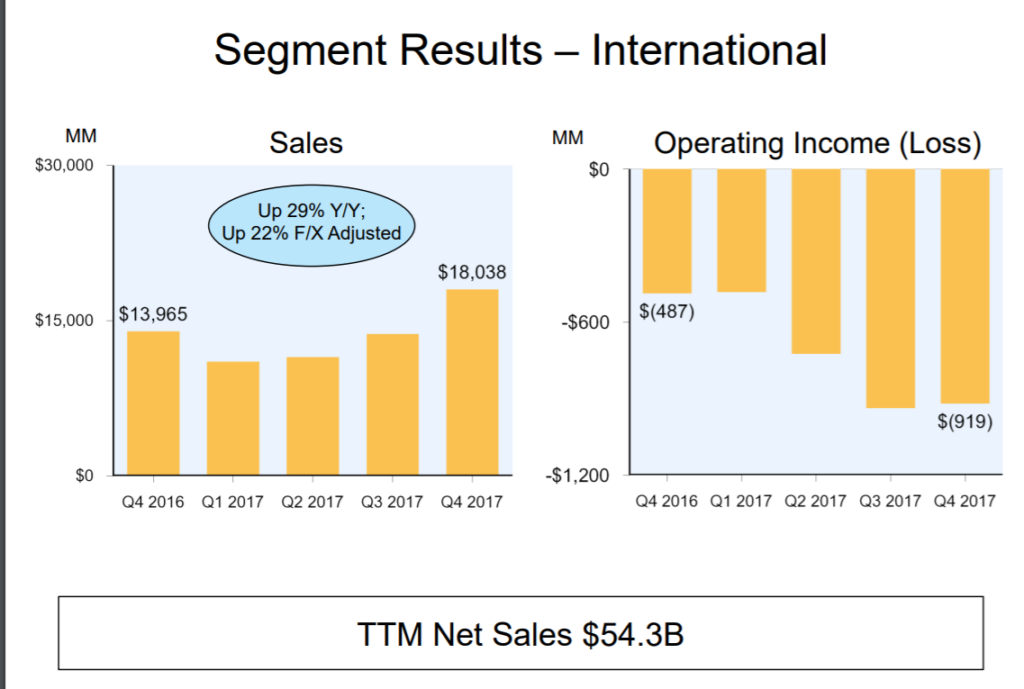
Grocery and Consumables
- The company sees groceries and consumables as a key focus area for 2018.
- The company continues to integrate Whole Foods: focus on continuing to lower prices, launched Whole Foods products on Amazon, and continued its work on making Prime the Whole Foods loyalty program. Amazon also continues to add lockers.
- Amazon Go, a store with no checkout required, is now open to the public in Seattle. “The checkout-free shopping experience is made possible by the same types of technologies used in self-driving cars: computer vision, machine learning, and sensor fusion.”
- Whole Foods is said to be “part of the company’s commitment to have the best quality of products and have them in stock.” The out of stock issues raised lately by the media are more related to higher demand and according to the company, “these problems are short term”.
Private label Strategy
- the company’s PL strategy focuses on (1) broad selection across categories (2) items that have high caliber of quality and (3) that add to the selection offered by vendors. Current focus areas for PL include: Amazon Fashion, Whole Foods private labels, Wickedly Prime, and other areas according to consumer demand.
- Amazon launched two furniture brands: Rivet, offering affordable and versatile mid-century modern furniture ideal for smaller spaces; and Stone & Beam, offering durable and stylish furniture for the modern household.
- Amazon, Berkshire Hathaway, and JPMorgan Chase & Co. announced a partnership to address healthcare for their U.S. employees, with the aim of improving employee satisfaction and reducing costs.
Amazon Web Services (AWS)
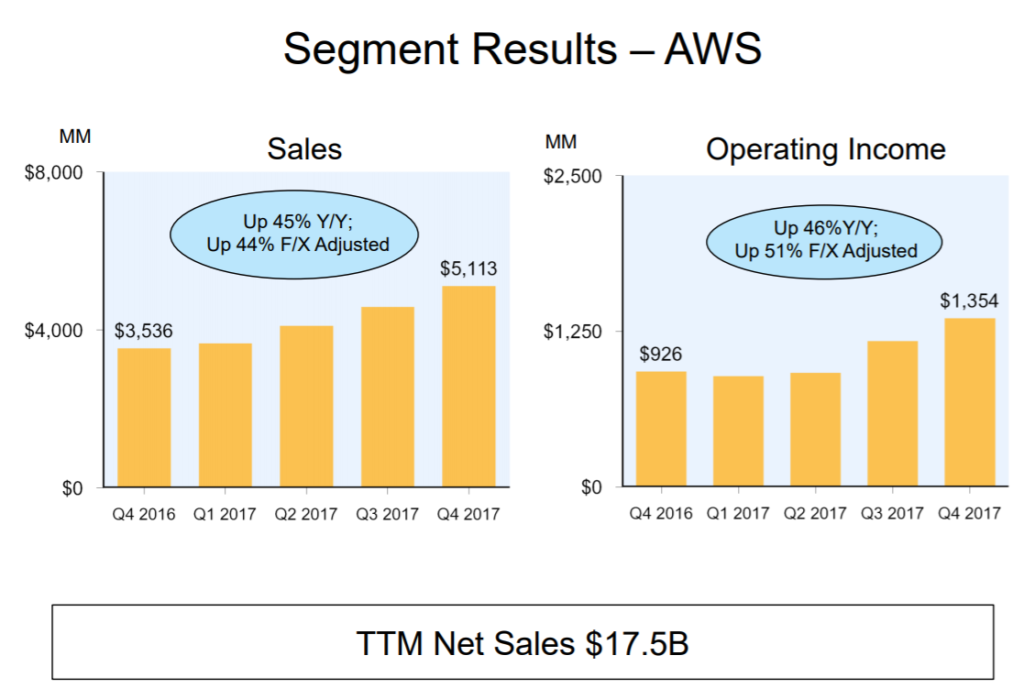
- AWS is a key component of the consumer business. The Consumer Business is one of the biggest areas for Amazon. AWS benefits from beta customers using their products and services.
- Amazon Web Services (AWS) “continued to expand its infrastructure in 2017 to best serve customers, launching a new region in France and a second AWS Region inChina during the quarter. AWS plans to open 12 more Availability Zones across four regions (Bahrain, Hong Kong, Sweden, and a second GovCloud Region in the U.S.) between now and early 2019. AWS now operates 52 Availability Zones across 18 infrastructure regions globally.”
- Some of the of the interesting technologies developed by AWS include four Artificial Intelligence (AI) services that allow developers to build applications that emulate human-like cognition: Amazon Transcribe for converting speech to text; Amazon Translate for translating text between languages; Amazon Comprehend for understanding relationships and finding insights within text; and Amazon Rekognition Video, a deep-learning powered video analysis service that tracks people, detects activities, and recognizes objects, celebrities, and inappropriate content.
- AWS launched AWS DeepLens, a deep-learning enabled wireless video camera that pairs an HD camera developer kit with a set of sample projects to help developers learn machine learning concepts, including computer vision and deep learning.
- AWS launched Alexa for Business, a new service that brings Alexa into the workplace to help employees be more productive and organized on both personal and shared Echo devices by simply using their voice. Employees can use Alexa for Business to find an open conference room, make phone calls, check calendars, schedule and start meetings, manage to-do lists, set reminders, and even find information in popular business applications like Salesforce, Concur, or Splunk.
HQ2
- Amazon reviewed 238 proposals from across the U.S., Canada, and Mexico to host HQ2, the company’s second headquarters in North America, and selected 20 metropolitan areas to move to the next phase of the process. Amazon expects to invest over $5 billion and create as many as 50,000 high-paying jobs at its new second home.

